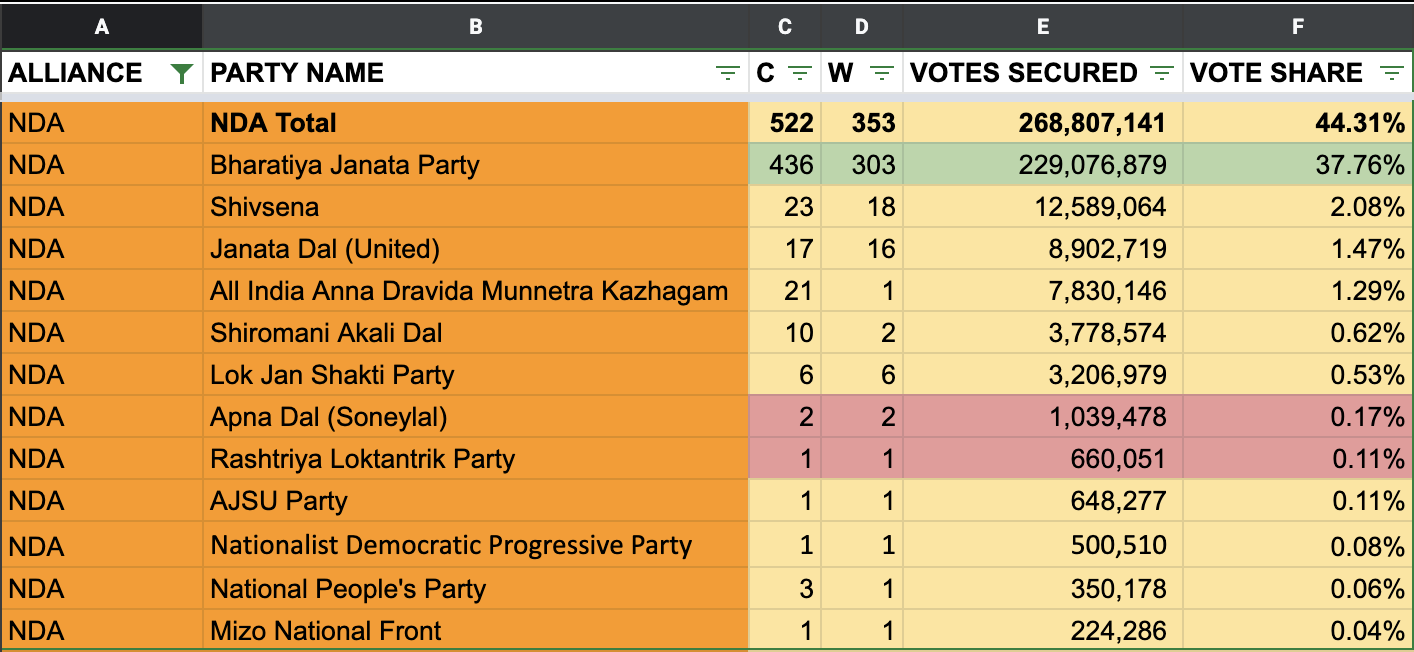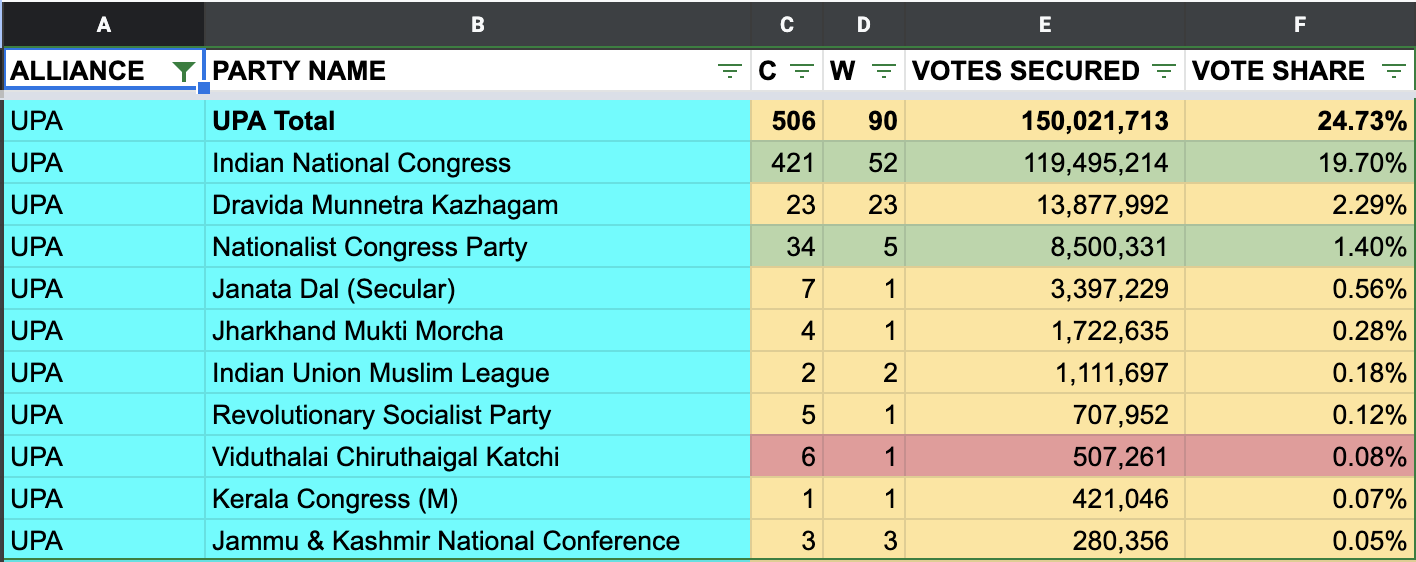At the time of writing this article, the election season in USA, and the one in India (Bihar elections and by-polls) are coming to an end. Even Donald Trump has conceded defeat to President-elect Joe Biden, and Nitish Kumar has been sworn-in for his 4th term. Both countries follow different forms of first-past-the-post (FPTP), and one of the criticism of FPTP is that it leads to Minority rule, ie, the elected candidate has not won been voted for by > 50% of of the population. That got me thinking - what if the results of the 2019 general elections in India were decided by Proportional Representation? (Doing the same experiment in USA would not be very interesting : there are 2 candidates and we already know what is the result of the popular vote). Consider the following thought-experiment : what if people voted in the exact same manner in the 2019 general elections, however, the moment the results are announced, the rules of the game are changed; ie, the seats won do not matter, the overall vote share does, and the party/coalition with greater than 50% share is deemed victorious. Ruling parties victorious by FPTP rarely win greater than 50% vote share in India, and with its massive diversity in parties and poltical spectrum, this promises to be a very interesting thought experiment.
The Data
Election Commission of India releases data for national parties, state parties, regional (unrecognised) parties, and total aggregates separately. I have compiled all of the data in this sheet. According to their data, the total valid votes counted are 606,633,413, or roughly 606M. It’s easy to verify this number. According to this data, total no of individuals who voted in booths is 610,851,929, and total number of postal ballots are 2,804,369. This brings the total votes to 613,656,298. Total NOTA votes are 6,513,355. Total rejected votes are 509,530. If you subtract them from the total votes you would get 606,633,413, which are the total number of valid votes.
A small caveat - according to election commission data, the total number of votes polled by national parties is 418,569,347, that by state parties is 140,578,537, and regional parties & independents is 47,387,976. If you add them all up, you get 606,535,860, which is still 97,553 votes short of the total valid votes, ie, 606,633,413. I don’t know how to account for those 97,553 votes, but 97k is incredibly miniscule when compared to 606M, so we can ignore it for now.
Vote Shares
The figures below show the vote share for every party. Columns C and D correspond to the number of seats contested and won respectively. However, we are really interested in the columns E & F.
Color scheme : The colors from column C and beyond are red, yellow, and green; and they correspond to ECI’s definition of regional, state, and national parties respectively.
If columns A & B are coloured, they indicate an alliance : Orange for NDA, Cyan for UPA, Purple for Mahagathbandhan and Sharp Red for Left Front.

Figure 1: Vote share for NDA parties in descending order

Figure 2: Vote share for UPA parties in descending order

Figure 3: Vote share for other parties and independents in descending order
Insights
NDA wins the election here as well
In the 2019 general election, BJP won a majority in seats by itself, not requiring its NDA allies. However, by vote share, NDA does not hit the majority mark, getting 44.31% of the votes. Their main competitor, the UPA, gets 24.71% of the votes. It’s highly unlikely for UPA to get the extra 25.41% vote by convincing others to join their coalition before NDA gets their extra 6%. Therefore, the NDA is winning this election in this universe as well.
NDA allies are far more important here
As stated before, BJP won a majority in seats by itself in our universe, which took away a lot of power away from the NDA allies. That is visible in the cabinet - there is only 1 non-BJP Cabinet minister - Ramdas Athawale (the “CORONA GO” guy). This would not be the case in this universe. Every vote matters and it is important to keep all the NDA allies intact. Several important ministries will have to be given to key NDA allies such as Shiv Sena, JD(U), and Akali Dal. Maybe even some CCS ministries. Maybe small parties like Mizo National Front get a MoS.
NDA allies and state elections
This also has disastrous consequences in the state elections for the BJP. The 2019 Maharashtra and 2020 Bihar state elections have not happened yet in this universe. If the results of the Maharashtra elections are the same, BJP cannot ignore the demands of chief ministership from Shiv Sena - they will simply leave the NDA otherwise. We may get still get Uddhav Thackeray as CM, but with BJP as the coalition partner. Similarly, the rhetoric of LJP and JD(U) will be far more empowered in the 2020 Bihar elections, and BJP cannot choose to compete for all of Punjab’s 117 seats in 2022 on their own (as they are doing in our universe).
Internal “reordering” of NDA allies
Where will NDA get the remaining 6% from?
Didi, the Trump card
Mahagathbandhan, unlikely alliance
Andhra and Telangana Parties
Scramble for the votes of Independents